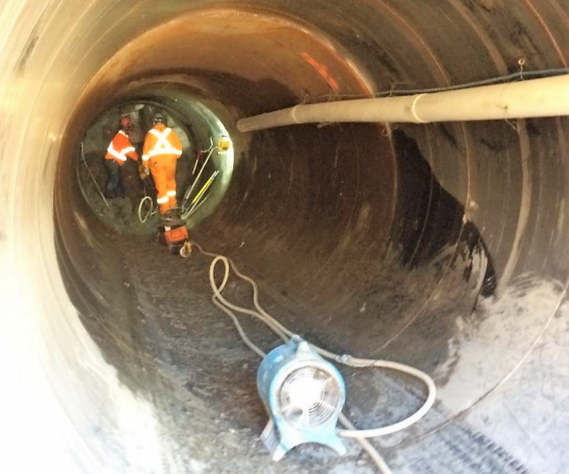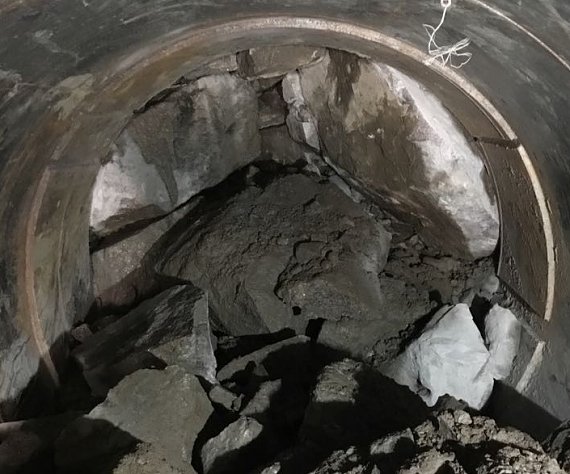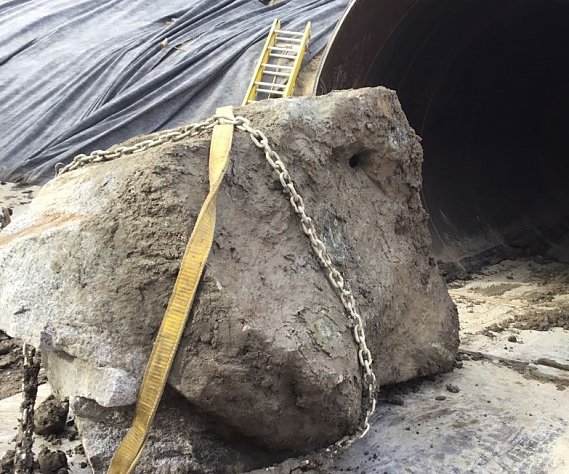Boring under railway tracks
Installation of a steel culvert with a diameter of 2,438 mm in rocky backfill
First use of a hydraulic hammer in Quebec
Length of 77 m
Slope of 1.4%
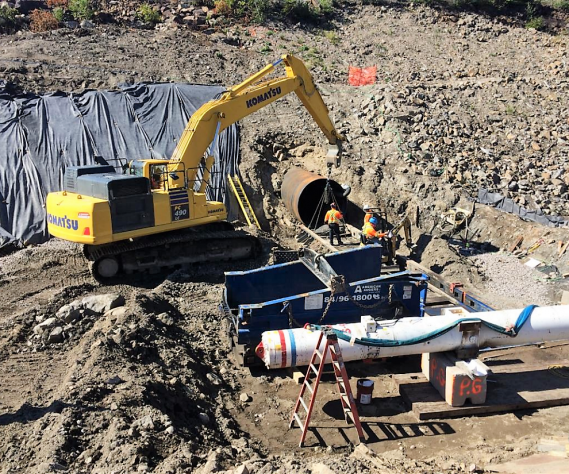
Photogrammétrie
A photogrammetric survey of the terrain was first conducted.
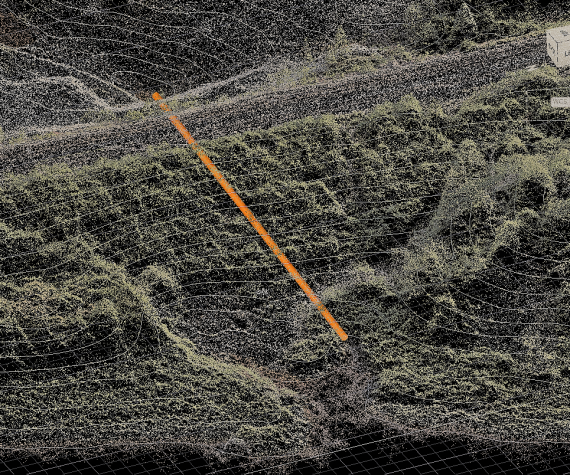
Geotechnical Campaign and Feasibility
In order to determine the optimal route for the future pipeline and the trenchless technique suitable for the site conditions, the following geotechnical works were carried out:
- Two series of exploratory boreholes with a hydraulic excavator to determine the depth of the bedrock;
- Eleven geotechnical drillings with characterization of the stones and blocks encountered.
Subsequent to the analysis of the geotechnical data from the various probable routes, the risk evaluation of the potentially applicable techniques indicated a preference for insertion by boring.
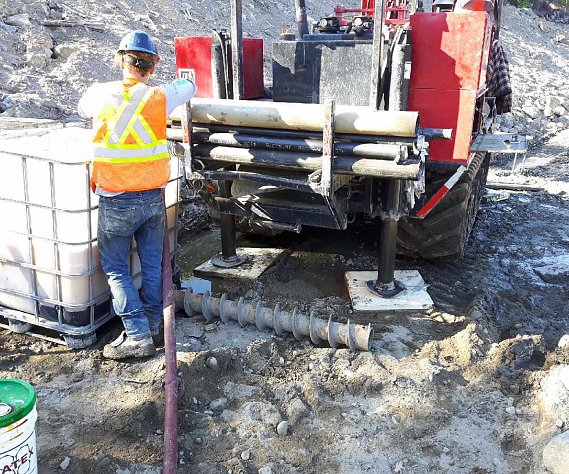
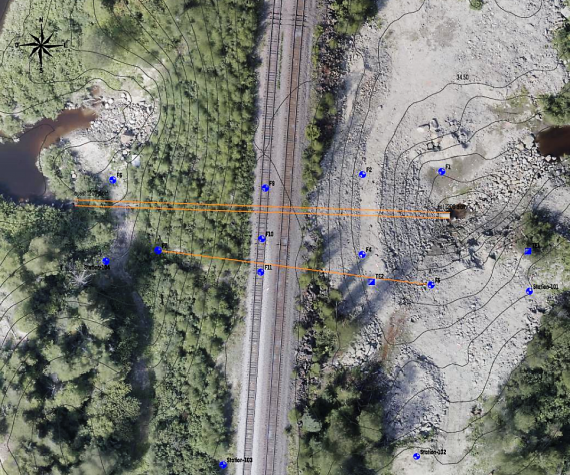
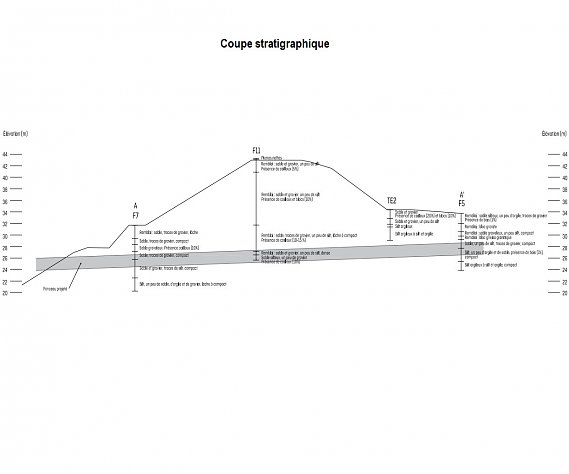
Engineering
The design calculations were specifically carried out for the boring technique according to industry standards.
- Constraints induced on the steel pipe;
- Friction and required pushing forces;
- Thickness and resistance of the pipe;
- Design of the driving shoe;
- Soil settlement;
- Stability at the tunnel face;
- Stability of the tunnel wall;
- Closure of the tunnel.
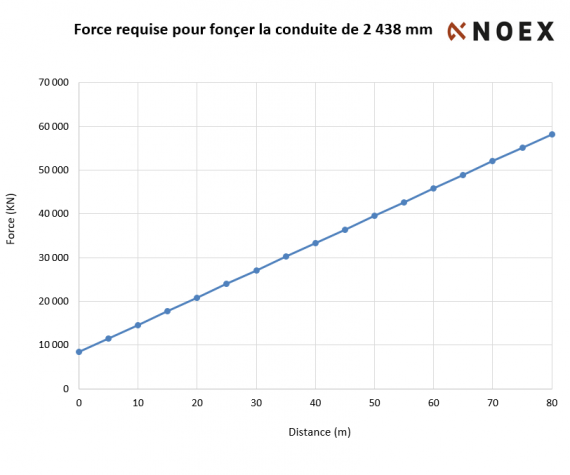
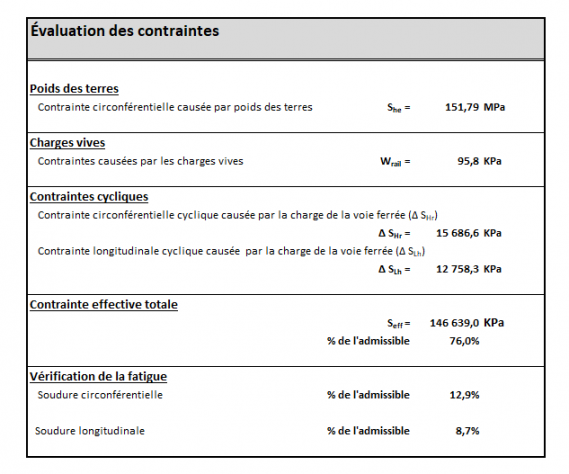
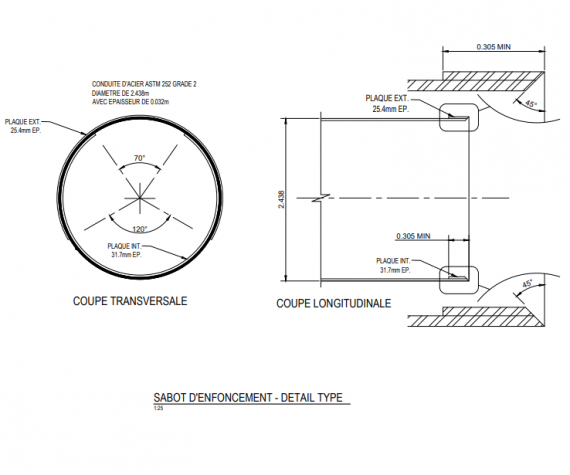
Work Area
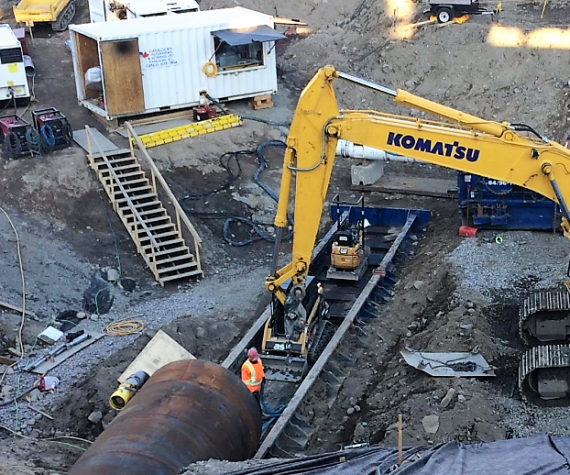
Soutirage des blocs
